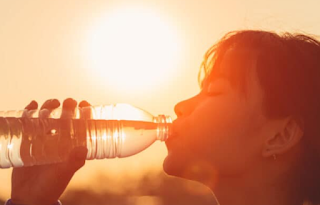Unveiling the Nexus: How Climate Change May Impact Babies' Birthweight in Australia
Introduction: In a groundbreaking study conducted by the Curtin University, a potential link between extreme bioclimatic exposure during pregnancy and babies' birthweights for gestational age has been uncovered. This large-scale research, spanning 15 years and over 385,000 pregnancies in Western Australia, delves into the repercussions of climate change on reproductive health. The findings shed light on the association between outdoor heat or cold stress during pregnancy and the risk of babies being born too small or large for their gestational ages.
Body: The Curtin School of Population Health meticulously analyzed pregnancies from 2000 to 2015, focusing on the critical period from 12 weeks before conception until birth. Within this cohort, 9.8% and 9.9% of children were born too small and large for gestational age, respectively.
The study pioneers the use of the Universal Thermal Climate Index (UTCI) to gauge bioclimatic exposure before and during pregnancy. This modern biothermal tool offers insights into a person's physiological response to the thermal environment. The research unveils that exposure to extreme biothermal stress, whether cold or heat, during specific stages of pregnancy is correlated with a higher risk of babies deviating from the ideal birthweight for their gestational age.
Lead researcher Dr Sylvester Dodzi Nyadanu underscores the significance of birthweight in its association with mortality risk, developmental issues, and the susceptibility to various diseases throughout life. The study indicates that exposure to environmental conditions causing biothermal stress in the latter stages of pregnancy increases the risk of babies being born too small or large for their gestational ages.
Key Findings:
Biothermal Exposure Ranges: The average biothermal exposure ranged between 8.1 and 30.0 degrees Celsius, indicating slight cold stress and moderate heat stress on the UTCI scale.
Critical Windows of Exposure: Extreme biothermal exposures at the 1st percentile (cold stress) and 99th percentile (heat stress) during specific stages of pregnancy were notably associated with changes in birthweight for gestational age.
Vulnerable Subpopulations: Certain subpopulations, including non-Caucasian individuals, male births, pregnancies in those aged 35 and above, those in rural areas, and those who smoked during pregnancy, were identified as being at a higher risk of abnormal fetal growth due to exposure to biothermal stress.
Implications and Climate Change Threat: Dr Nyadanu emphasizes the broader implications of the study, linking climate change to reproductive health threats. Heat or cold waves, vector-borne diseases, natural disasters, food and water insecurity, and alterations in natural and social environments pose significant challenges. Thermal stress exposures increase dehydration, induce oxidative stress, and trigger systemic inflammatory responses, leading to adverse reproductive and fetal health outcomes.
Conclusion: As the study unfolds critical insights into the vulnerability of pregnancies to climate change-induced biothermal stress, the call for further research and interventions becomes imperative. The identified subpopulations require targeted strategies, and the study underscores the urgency of integrating climate care interventions into reproductive health care. Pregnancy emerges as a sensitive period in the spectrum of climate change impacts, emphasizing the need for proactive measures.
Frequently Asked Questions (FAQs):
Q: What is the Universal Thermal Climate Index (UTCI) used for in the study? A: The UTCI is employed to measure bioclimatic exposure before and during pregnancy, assessing the risks of babies being born too small or large for gestational age.
Q: Which subpopulations are identified as being at a higher risk of abnormal fetal growth due to biothermal stress? A: Non-Caucasian individuals, male births, pregnancies in those aged 35 and above, those in rural areas, and those who smoked during pregnancy are identified as vulnerable subpopulations.
Q: What are the broader implications of the study regarding climate change and reproductive health? A: The study links climate change to threats in reproductive health, encompassing heat or cold waves, vector-borne diseases, natural disasters, food and water insecurity, and alterations in natural and social environments.
Q: How do extreme biothermal exposures during pregnancy impact birthweights for gestational age? A: Exposure to extreme biothermal stress, whether cold or heat, during specific stages of pregnancy is correlated with a higher risk of babies being born too small or large for their gestational ages.
Q: Why is pregnancy considered a vulnerable period for climate change? A: Pregnancy is identified as a vulnerable period due to the impact of climate change-induced biothermal stress, leading to adverse reproductive and fetal health outcomes.
Unraveling Climate's Impact on New Life: Study Reveals Link Between Extreme Biothermal Stress and Babies' Birthweights 🌡️👶 Dive into the findings from Curtin University's 15-year research in Western Australia.
#ClimateAndHealth, #PregnancyHealth, #BirthweightImpact, #ReproductiveHealth, #BiothermalStressStudy

